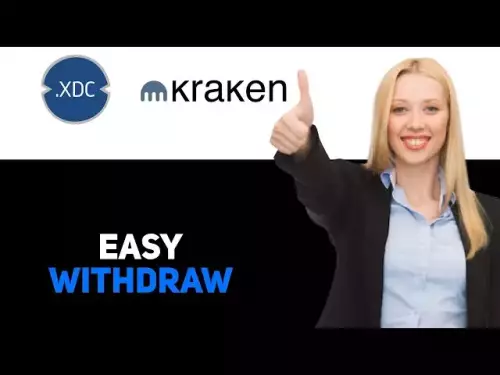-
 bitcoin
bitcoin $114684.631706 USD
-0.87% -
 ethereum
ethereum $4228.677447 USD
1.58% -
 bnb
bnb $1294.880693 USD
-1.16% -
 tether
tether $1.000819 USD
-0.02% -
 xrp
xrp $2.605138 USD
2.79% -
 solana
solana $209.908690 USD
5.89% -
 usd-coin
usd-coin $0.999903 USD
-0.03% -
 dogecoin
dogecoin $0.213423 USD
2.93% -
 tron
tron $0.322721 USD
-0.10% -
 cardano
cardano $0.727247 USD
3.66% -
 hyperliquid
hyperliquid $42.339456 USD
6.05% -
 chainlink
chainlink $19.910811 USD
5.16% -
 ethena-usde
ethena-usde $1.000557 USD
0.00% -
 stellar
stellar $0.349734 USD
2.69% -
 bitcoin-cash
bitcoin-cash $543.848687 USD
-0.21%
How to perform crypto arbitrage?
Crypto arbitrage exploits price differences across exchanges, buying low on one platform and selling high on another to profit from market inefficiencies.
Aug 13, 2025 at 11:36 am

Understanding Crypto Arbitrage and Its Core Principles
Crypto arbitrage refers to the practice of exploiting price differences of the same cryptocurrency across multiple exchanges to generate profit. This strategy relies on the fact that digital assets often trade at slightly different prices on various platforms due to differences in liquidity, trading volume, regional demand, and market inefficiencies. The fundamental principle behind arbitrage is buying low on one exchange and simultaneously selling high on another. Because cryptocurrencies are traded globally and exchanges operate independently, price discrepancies can exist for minutes or even seconds, creating a narrow window for traders to act.
Arbitrage opportunities arise in both centralized and decentralized exchanges. On centralized platforms like Binance, Coinbase, or Kraken, price variations may occur due to differing user bases and order book depths. On decentralized exchanges (DEXs) such as Uniswap or SushiSwap, price differences stem from automated market maker (AMM) models and varying liquidity pool sizes. The key to successful arbitrage lies in speed, precision, and low transaction costs. Traders must monitor multiple exchanges in real time and execute trades swiftly before the market corrects itself.
Types of Crypto Arbitrage Strategies
There are several forms of crypto arbitrage, each with distinct mechanics and risk profiles. The most common is spatial arbitrage, where a trader buys a cryptocurrency on one exchange and sells it on another at a higher price. For example, if Bitcoin is priced at $30,000 on Exchange A and $30,150 on Exchange B, a trader can purchase BTC on A and sell it on B, netting a $150 profit per coin, minus fees.
Another method is triangular arbitrage, which occurs within a single exchange by leveraging price imbalances between three different currency pairs. Suppose ETH/BTC, BTC/USDT, and ETH/USDT are all traded on the same platform. If the implied exchange rate between ETH and USDT via BTC differs from the direct ETH/USDT rate, a trader can cycle through the three pairs to lock in a profit. This requires complex calculations and high-frequency execution tools.
Cross-border arbitrage involves taking advantage of regulatory or demand differences between countries. For instance, due to capital controls or higher local demand, Bitcoin might trade at a premium in South Korea (the 'Kimchi premium') compared to U.S. exchanges. Traders with access to both markets can exploit this gap. Lastly, statistical arbitrage uses algorithms to identify historical price patterns and execute trades based on predicted deviations, though this is more advanced and typically automated.
Setting Up Accounts and Funding for Arbitrage
To begin crypto arbitrage, you must first register on at least two exchanges with noticeable price differences. Choose platforms with high liquidity, low withdrawal/deposit fees, and fast transaction processing. Recommended exchanges include Binance, KuCoin, Coinbase Pro, and Bybit. Complete the KYC (Know Your Customer) verification process on each platform to unlock higher withdrawal limits.
After registration, deposit funds into your accounts. It's efficient to hold stablecoins like USDT or USDC across multiple exchanges, as they maintain consistent value and reduce exposure to market volatility during transfers. Use internal wallet transfers if supported, or send stablecoins via blockchain networks such as BEP-20 (Binance Smart Chain) or ERC-20 (Ethereum). Be mindful of network congestion and gas fees, especially on Ethereum.
Ensure two-factor authentication (2FA) is enabled on all accounts for security. Verify withdrawal addresses and set up API keys if you plan to automate trading. Keep a record of deposit confirmations and transaction hashes. Having pre-funded accounts on both the buying and selling exchanges eliminates delays caused by blockchain confirmation times, which is critical given the short-lived nature of arbitrage opportunities.
Executing an Arbitrage Trade Step by Step
When a price discrepancy is identified, immediate action is required. Assume Ethereum is trading at $1,800 on Exchange A and $1,810 on Exchange B. The following steps outline the execution:
- Log in to Exchange A and place a market buy order for ETH using your stablecoin balance
- Confirm the transaction and wait for the ETH to appear in your wallet
- Simultaneously, log in to Exchange B and place a limit sell order for the same amount of ETH at $1,810
- Once the buy order is filled on Exchange A, transfer the ETH to Exchange B if not already held there
- Wait for the deposit confirmation on Exchange B
- The sell order executes, converting ETH back into stablecoin
- Calculate net profit by subtracting trading fees, withdrawal fees, and network gas costs from the price difference
For faster execution, use limit orders pre-set at favorable prices or employ bots that monitor spreads and auto-execute when thresholds are met. Manual trading introduces delays, so automation is preferred for consistent results. Always double-check order types and amounts before confirming.
Using Arbitrage Bots and Automation Tools
Manual arbitrage is impractical due to the speed at which markets adjust. Arbitrage bots can scan multiple exchanges in real time, identify profitable spreads, and execute trades within milliseconds. Popular tools include Bitsgap, 3Commas, and HaasOnline. These platforms allow users to connect exchange accounts via API keys and configure trading rules.
To set up a bot:
- Generate API keys on each exchange with 'trade' and 'read' permissions only (avoid 'withdraw' access for security)
- Input the keys into the bot platform
- Define parameters such as minimum profit margin, maximum trade size, and target exchanges
- Enable real-time price monitoring for specific pairs like BTC/USDT or ETH/USDC
- Test the bot in simulation mode before deploying with real funds
Bots can perform cross-exchange, triangular, or DEX-to-CEX arbitrage depending on configuration. They reduce human error and reaction time. However, network latency, exchange API rate limits, and sudden price movements can still impact success rates. Regularly monitor bot performance and adjust settings based on market conditions.
Risks and Mitigation Strategies in Crypto Arbitrage
Despite its appeal, crypto arbitrage carries several risks. Price volatility can cause the spread to vanish before both legs of the trade are completed. For example, after buying on Exchange A, the price on Exchange B might drop, turning a potential profit into a loss. To mitigate this, use instant execution methods and avoid holding assets longer than necessary.
Transaction fees and withdrawal delays are significant concerns. High gas fees on Ethereum or slow confirmations on Bitcoin can erase profits. Choose low-cost networks like Polygon or Solana when possible. Some exchanges offer zero-fee trading for certain pairs, which can improve margins.
Liquidity risk arises when large orders cannot be filled at the expected price. Always check order book depth before trading. A thin order book may result in slippage, reducing profitability. Start with small trade sizes to test execution efficiency.
Exchange-specific risks include API downtime, withdrawal freezes, or account restrictions. Diversify across multiple platforms and avoid concentrating funds on a single exchange. Use cold wallets for long-term storage and only keep necessary funds on trading platforms.
Frequently Asked Questions
Can I perform crypto arbitrage with a small budget?Yes, small-scale arbitrage is possible, but profitability depends on minimizing fees. Use exchanges with low trading costs and transfer assets via low-fee networks. Even with $500, consistent small gains can accumulate over time, provided execution is precise.
Is crypto arbitrage legal?Arbitrage is a legal trading strategy in most jurisdictions. It does not involve manipulation or insider information. However, ensure compliance with local regulations, especially regarding taxation of trading profits and KYC requirements on exchanges.
Why don’t price differences last longer?Market forces and high-frequency traders quickly eliminate arbitrage opportunities. As more participants exploit a spread, buying pressure on the cheaper exchange raises its price, while selling pressure on the higher-priced exchange lowers it, leading to equilibrium.
Do I need programming skills to run an arbitrage bot?Not necessarily. Many bot platforms offer user-friendly interfaces that require no coding. Pre-built strategies and templates allow beginners to configure bots using simple settings. However, customizing advanced logic may require knowledge of APIs and scripting.
Disclaimer:info@kdj.com
The information provided is not trading advice. kdj.com does not assume any responsibility for any investments made based on the information provided in this article. Cryptocurrencies are highly volatile and it is highly recommended that you invest with caution after thorough research!
If you believe that the content used on this website infringes your copyright, please contact us immediately (info@kdj.com) and we will delete it promptly.
- XRP Price Prediction: Weekend Rollercoaster or Rally?
- 2025-10-12 08:45:16
- Bittensor (TAO): Super Bullish Signals Point to Potential 2x Rally
- 2025-10-11 10:25:12
- Silver Price Correction: Navigating the Dip & Identifying Key SEO Keywords
- 2025-10-11 10:25:12
- Decoding Crypto Trends: Bittensor's Bull Run, Cardano's Dip, and LivLive's Presale Buzz in 'Uptober 2025'
- 2025-10-12 08:45:16
- MoonBull: The Crypto Meme Coin Promising 1000x Gains?
- 2025-10-11 10:30:01
- Crypto Payroll Revolution: Stablecoins, Altcoins, and the Future of Salary Payments
- 2025-10-11 10:30:01
Related knowledge

How do decentralized identity (DID) solutions work?
Oct 14,2025 at 11:36pm
Understanding Decentralized Identity in the Blockchain Ecosystem1. Decentralized identity (DID) solutions are built on blockchain networks, allowing i...

What does it mean for code to be "open source" in crypto?
Oct 12,2025 at 01:54pm
Understanding Open Source in the Cryptocurrency Ecosystem1. In the context of cryptocurrency, open source refers to software whose code is publicly ac...

What is the purpose of a "testnet"?
Oct 12,2025 at 09:01am
Understanding the Role of Testnets in Blockchain Development1. A testnet serves as a parallel version of a blockchain network, designed specifically f...

How to avoid phishing scams in crypto?
Oct 13,2025 at 06:18pm
Understanding Common Crypto Phishing Tactics1. Cybercriminals frequently use fake websites that mirror legitimate crypto exchanges or wallet platforms...

What is the difference between single-collateral and multi-collateral Dai?
Oct 12,2025 at 05:18pm
Understanding Single-Collateral Dai1. Single-Collateral Dai (SCD) was the original version of the Dai stablecoin launched by MakerDAO in 2017. It allo...

What is a "sidechain"?
Oct 13,2025 at 02:36pm
Understanding the Concept of Sidechains1. A sidechain is a blockchain that operates independently but is connected to another blockchain, known as the...

How do decentralized identity (DID) solutions work?
Oct 14,2025 at 11:36pm
Understanding Decentralized Identity in the Blockchain Ecosystem1. Decentralized identity (DID) solutions are built on blockchain networks, allowing i...

What does it mean for code to be "open source" in crypto?
Oct 12,2025 at 01:54pm
Understanding Open Source in the Cryptocurrency Ecosystem1. In the context of cryptocurrency, open source refers to software whose code is publicly ac...

What is the purpose of a "testnet"?
Oct 12,2025 at 09:01am
Understanding the Role of Testnets in Blockchain Development1. A testnet serves as a parallel version of a blockchain network, designed specifically f...

How to avoid phishing scams in crypto?
Oct 13,2025 at 06:18pm
Understanding Common Crypto Phishing Tactics1. Cybercriminals frequently use fake websites that mirror legitimate crypto exchanges or wallet platforms...

What is the difference between single-collateral and multi-collateral Dai?
Oct 12,2025 at 05:18pm
Understanding Single-Collateral Dai1. Single-Collateral Dai (SCD) was the original version of the Dai stablecoin launched by MakerDAO in 2017. It allo...

What is a "sidechain"?
Oct 13,2025 at 02:36pm
Understanding the Concept of Sidechains1. A sidechain is a blockchain that operates independently but is connected to another blockchain, known as the...
See all articles

























![[4K 60fps] Prisma by novichokk (1 Coin) [4K 60fps] Prisma by novichokk (1 Coin)](/uploads/2025/10/14/cryptocurrencies-news/videos/k-fps-prisma-novichokk-coin/68ee49804ba00_image_500_375.webp)
















































